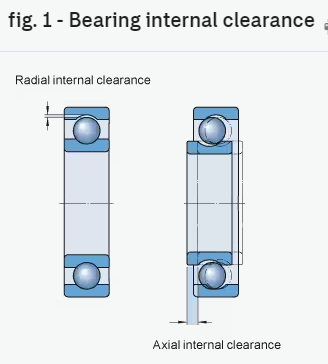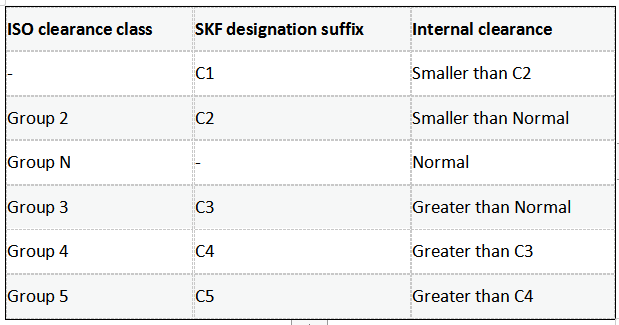|
Bearing ClearanceInternal clearanceBearing internal clearance (fig. 1) is defined as the total distance through which one bearing ring can be moved relative to the other in the radial direction (radial internal clearance) or in the axial direction (axial internal clearance).
In almost all applications, the initial clearance in a bearing is greater than its operating clearance. The difference is mainly caused by two effects: Ø Bearings are typically mounted with an interference fit on the shaft or in the housing. The expansion of the inner ring or the compression of the outer ring reduces the internal clearance. Ø Bearings generate heat in operation. Differential thermal expansion of the bearing and mating components influences the internal clearance. Sufficient internal clearance in a bearing during operation is important. Preload (clearance below zero) is possible for certain bearing types. To enable selection of the appropriate initial internal clearance to achieve the desired operational internal clearance, bearings are available in different clearance classes. ISO has established five clearance classes for many bearing types. SKF uses designation suffixes to indicate when the bearing internal clearance differs from Normal.
|




